Ask Ethan: Will The Earth Eventually Be Swallowed By The Sun?
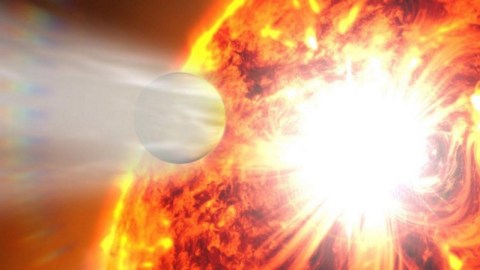
The Sun will eventually become a red giant star, swallowing Mercury and Venus in the process. But what will happen to Earth?
There are a few existential questions we can ask about the Universe that will take us well beyond the limits of not only humanity, but of life on Earth in general. As the Sun evolves over time, it will heat up and increase its rate of nuclear fusion, eventually outputting so much energy that Earth’s oceans will boil. After 1 or 2 billion more years, this will likely sterilize life on our planet entirely. After another 4-to-5 billion years pass, the Sun will swell into a red giant, entering the next phase of its evolution. When that happens, Mercury and Venus will definitely get swallowed, but what about the Earth? That’s what Greg Hallock wants to know, as he asks:
When the Sun eventually goes Red Giant, will the Earth simply be orbiting within the outer envelope of the sun, or will something more interesting happen?
This is one of the most fascinating questions we can ask, and we aren’t completely sure of the answer. Here’s what we know so far.
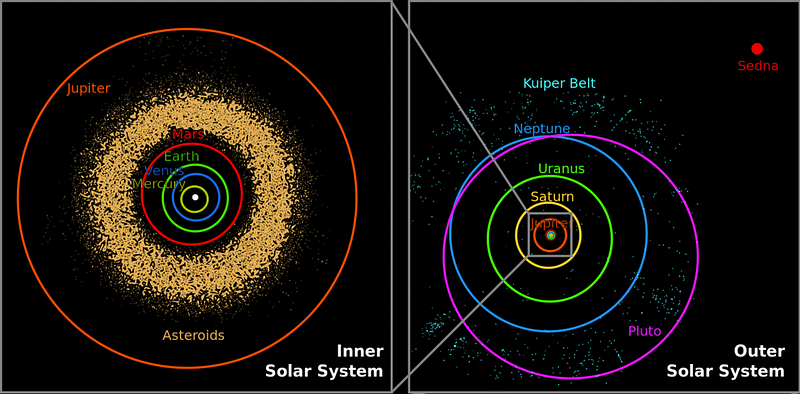
Most of us — scientists and non-scientists alike — have a relatively accurate picture of the Solar System in our heads. At the center lies the Sun, which is orbited by the four inner, rocky planets, each moving in stable, elliptical orbits. Beyond that lies the asteroid belt, a large collection of small masses (relative to the planets) that get kicked around by gravitational interactions, where they can either hit the Sun, get ejected from the Solar System, or be perturbed into other orbits where future interactions await them.
Beyond the asteroid belt lie the four gas giant worlds, which also move in stable, elliptical orbits, and have their own system of moons orbiting them. The outermost one, Neptune, shepherds the Kuiper belt, which may or may not contain a Planet Nine, and is followed by the Oort cloud beyond that.
This is the starting point most of us have for the Solar System, and it’s mostly correct.

Similarly, we think we understand how the Sun, which anchors our Solar System, is going to evolve over time. In its core, it fuses hydrogen into helium in a nuclear chain reaction. The net result is that, for every four hydrogen atoms fused into a helium atom, 0.7% of the pre-fusion mass gets converted into energy, via Einstein’s famous relation, E = mc².
With each fusion reaction that occurs, the core loses some of its potential hydrogen fuel, causing it to slightly contract and heat up. That slight change causes the region of the core where fusion occurs to slowly expand, and the rate of fusion to increase. Over timescales of billions of years, the Sun’s energy output increases, until the core runs out of hydrogen fuel entirely, causing it to contract, heat up, and eventually ignite helium fusion. Around this time, the Sun’s outer layers expand, resulting in its transformation into a red giant star.
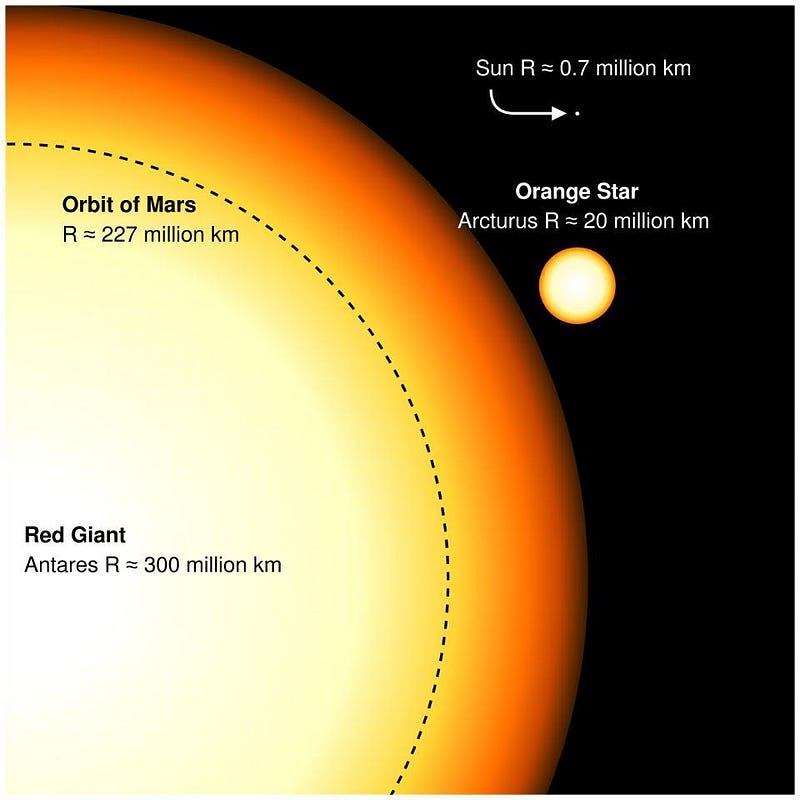
This is the base model for how our Solar System will evolve over time. As the Sun swells into a red giant, its outer layers become more tenuously held, and will get blown off, out of the Solar System entirely, causing the Sun to lose mass. As the central gravitational object in our Solar System decreases in mass, the planets tend to spiral outward, as they’re more loosely gravitationally held. The Earth in particular, presently ~150 million kilometers from the Sun on average, will see its orbital distance increase in proportion to the Sun’s mass loss.
But the Sun also increases in size, and if it creates too much drag on an orbiting planet, that planet will spiral into the Sun itself. The big question that should be on your mind is, with these two competing processes going head-to-head, which one will win for each planet? The most straightforward calculation would be to compute mass loss rates, orbital outspiral rates, and solar radius as a function of time, and see what happens.
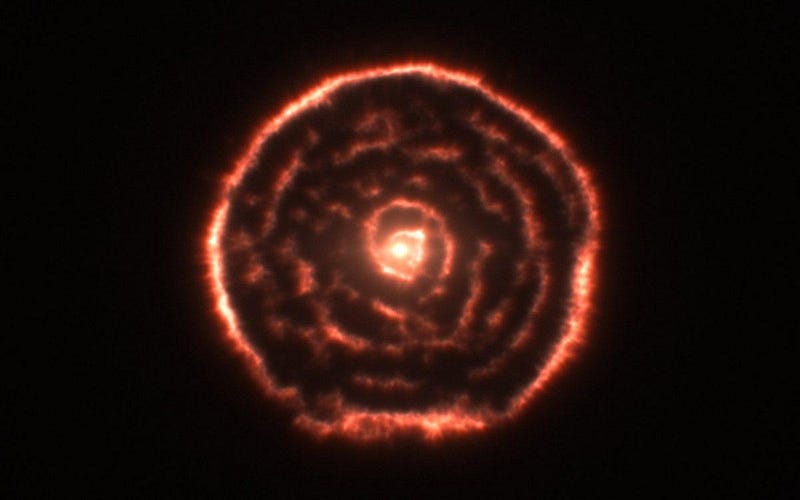
The most recent, comprehensive work on this front was performed by Klaus-Peter Schroder and Robert C. Smith in 2008, where they found that approximately 7.6 billion years from now, the Sun will lose about 33% of its present mass. This will cause Earth’s orbit to expand significantly, in proportion to the remaining mass of the Sun. While Mercury and Venus will be engulfed by the expanding Sun, the Earth will not.
However, the Earth also experiences tidal interactions from the giant Sun, where one portion of the Earth experiences a different net force on it from the opposite portion, and that causes Earth to lose some additional orbital angular momentum. What the authors found was:
planet Earth will not be able to escape engulfment, despite the positive effect of solar mass-loss. In order to survive the [Sun’s expansion when it reaches the tip of the red giant branch] phase, any hypothetical planet would require a present-day minimum orbital radius of about 1.15 AU.
In other words, Mars is definitely safe, but Earth should be devoured by our Sun.
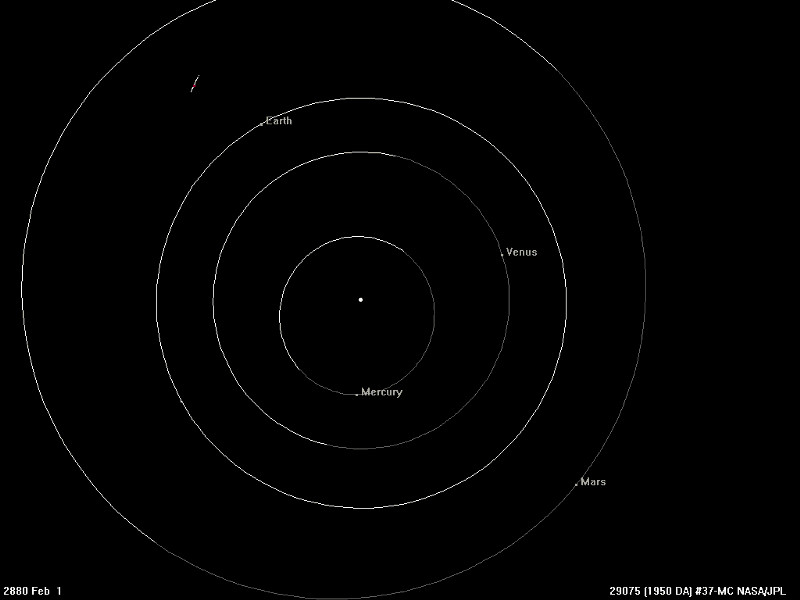
Of course, that conclusion is only valid if all of the earlier assumptions we made about the Solar System and Sun are absolutely true, when in fact they may not be. The first assumption that we need to challenge is the idea that the planets orbit in stable, elliptical orbits. If Newtonian gravity were absolutely true and we only had one planet orbiting a point-like Sun, this would be the case. But in a Solar System where objects have real, finite sizes, and where there are multiple objects that mutually tug on one another, these orbits become chaotic and will evolve with time.
According to scientist Dimitri Veras of the University of Warwick, who specializes in Solar System evolution, there’s approximately a 1% chance that one or more of the four inner planets will have their orbits become unstable due to these mutual gravitational tugs between them. “If the planets survive this phase,” he explained, “then when the Sun leaves the main sequence it will swallow Mercury and Venus and perhaps Earth. Mars will survive, but its surface will be transformed and its tenuous atmosphere will likely be sheared off.”
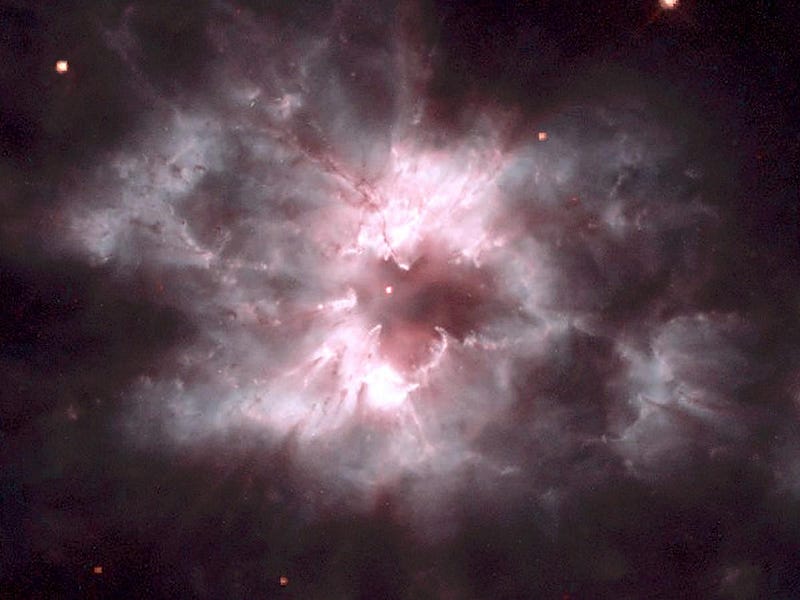
Why, if the earlier research of Schroder and Smith claimed that Earth would definitively be engulfed, are we not so sure about Earth anymore? It’s because a dynamical, changing environment can introduce chaos into the system, which makes the fate of our planet uncertain. In particular, three different factors come into play, none of which are presently modeled or understood sufficiently:
- Even if all four planets survive until the Sun enters the red giant phase, the ratios of their orbital distances will remain constant as the Sun expands, right up until Mercury is engulfed. At that point, the remaining planets may evolve chaotically, which could result in Earth getting boosted to a higher, safe orbit.
- The rate at which the Sun will both lose mass and grow in radius have significant uncertainties, and that could significantly impact evolutionary models.
- And — contributing the greatest uncertainty — the tidal forces that affect our planet’s orbit need to be better understood. According to Veras, “Many tidal models exist, and there does not exist a consensus about which are the most accurate or feasible ones to use.”
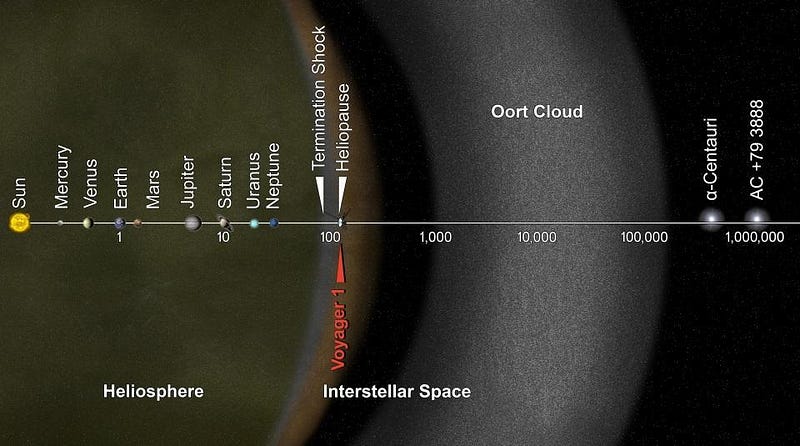
And that’s only when you consider the evolution of the inner Solar System, without including the impact of whatever dynamics are occurring in the outer Solar System. That work is Veras’ specialty, as he helped demonstrate in 2012 that almost the entire Oort cloud will not survive the Sun’s final stages of stellar evolution, and in 2016, when he showed that the existence or non-existence of Planet Nine could dramatically alter the fate of both the Kuiper belt and even three of the Solar System’s gas giants. (Only Jupiter’s safety is guaranteed if Planet Nine exists.)
What’s required, in order to know whether planet Earth will survive, is to identify and use the correct tidal prescription to model the interaction between the Sun and the Earth as the Solar System and the Sun itself evolves over time. As Veras put it, “There definitely needs to be more detailed work performed on the fate of the Earth: not only for whether the Earth will be engulfed, but also how the interior, surface and atmosphere will change as the Sun leaves the main sequence.”
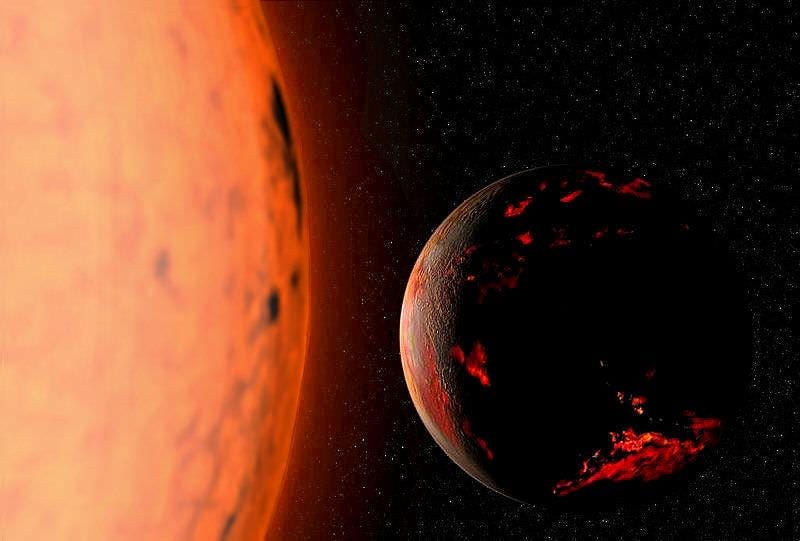
At the end of the red giant phase, the Sun is expected to expel much of its remaining outer layers, while the core region contracts down to form a white dwarf: a stellar remnant composed largely of carbon and oxygen. As far as what else will remain in the Solar System, however, recent research leaves a number of open questions.
Mercury and Venus will certainly have been engulfed; most (but probably not all) of the Oort cloud will have become unbound from the Solar System and escaped into the intergalactic medium. It’s speculative, but plausible, that the recent interstellar visitor, 2I/Borisov, may trace its origin to a different star system that evolved into a red giant. We have little reason to be confident in the fate of the Earth, however; until we have a better model of the Sun’s evolution, that should remain the case. While Jupiter will certainly survive, the fate of the remaining planets hinges on the existence and properties of Planet Nine, with the uncertainties so large that no definitive conclusions can be drawn at present.
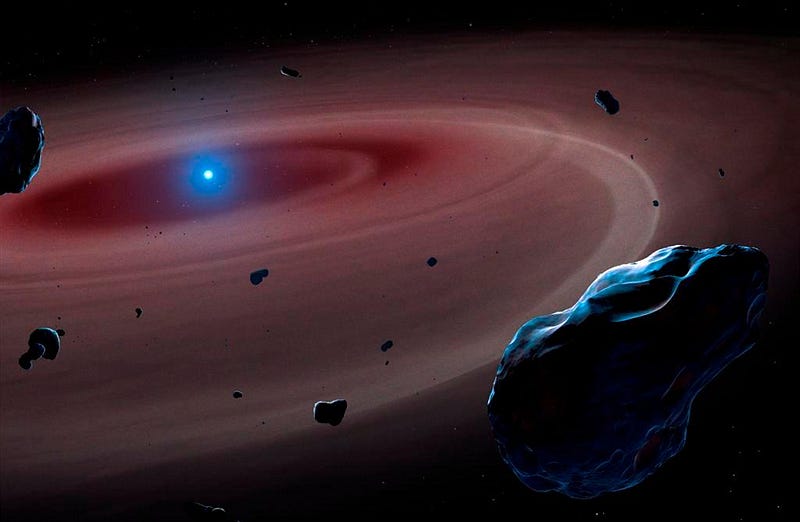
What’s perhaps even more unnerving is this: even if Earth survives the red giant phase and settles into what appears to be a stable orbit around the remnant white dwarf, it’s still possible that our planet itself will be destroyed. Given that at least Jupiter will remain, and potentially a number of other masses, the mutual interactions between these objects could perturb Earth to move closer to the white dwarf, where our planet’s utter destruction remains a viable potential outcome.
We fully expect that the Sun will become a red giant, that Earth will spiral outwards if it isn’t ejected beforehand, and that Mercury and Venus will be completely engulfed while the majority of objects in the outermost reaches of the Solar System will become unbound. But the uncertainties in the Sun’s evolution and the mutual effects of the objects we have are too great, at present, to know what our ultimate fate will be for certain.
The author thanks Dimitri Veras for his answers to a myriad of questions concerning the fate of the Earth and other object in the Solar System’s far future. You can send in your questions for consideration for Ask Ethan to startswithabang at gmail dot com!
Ethan Siegel is the author of Beyond the Galaxy and Treknology. You can pre-order his third book, currently in development: the Encyclopaedia Cosmologica.




